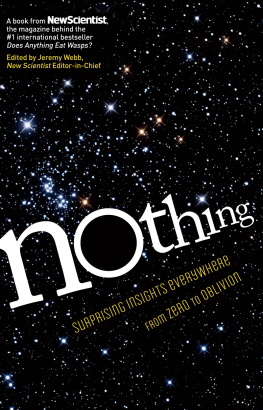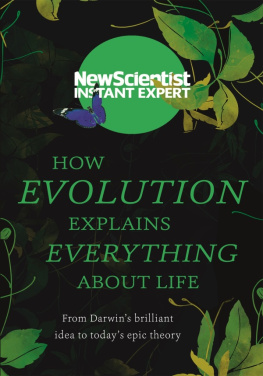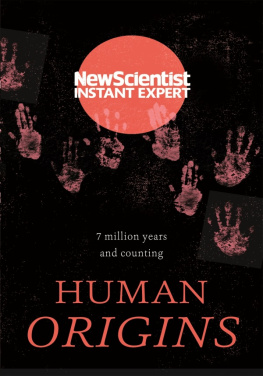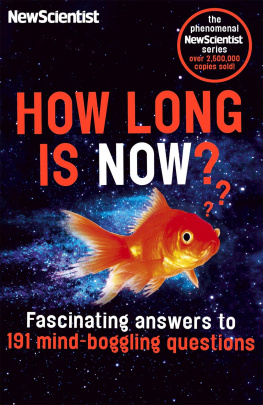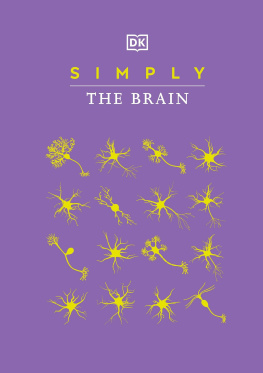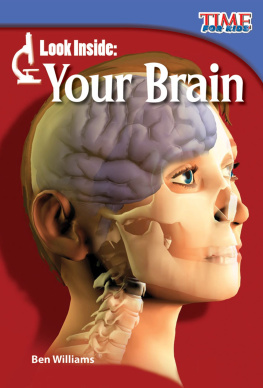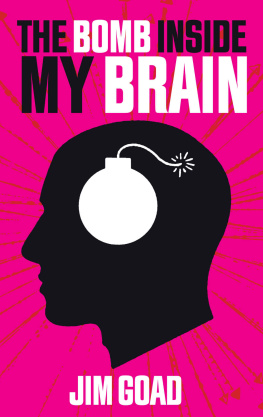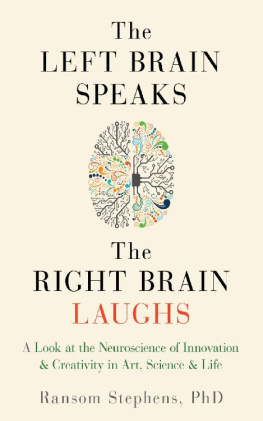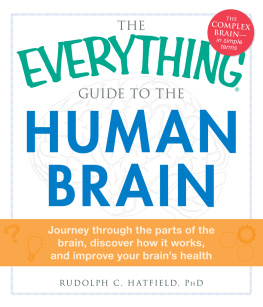How Your Brain Works
Inside the Most Complicated Object in the Known Universe
NEW SCIENTIST
www.hodder.co.uk
Contents
Series introduction
New Scientists Instant Expert books shine light on the subjects that we all wish we knew more about: topics that challenge, engage enquiring minds and open up a deeper understanding of the world around us. Instant Expert books are definitive and accessible entry points for curious readers who want to know how things work and why. Look out for the other titles in the series:
Scheduled for publication in spring 2017:
The End of Money
The Quantum World
Where the Universe Came From
Scheduled for publication in autumn 2017:
How Evolution Explains Everything About Life
Machines That Think
Why The Universe Exists
Your Conscious Mind
Contributors
Editor-in-chief: Alison George is Instant Expert editor for New Scientist.
Editor: Caroline Williams is a UK-based science journalist and editor. She is author of Override (Scribe, 2017).
Articles in this book are based on talks at the 2016 New Scientist masterclass How your brain works and articles previously published in New Scientist.
Academic contributors
Daniel Bor is an author and cognitive neuroscientist at the Sackler Centre for Consciousness Science at the University of Sussex, UK.
Derk-Jan Dijk is professor of sleep and physiology at the University of Surrey in Guildford, UK and director of the Surrey sleep research centre.
Jonathan K. Foster is professor in clinical neuropsychology and behavioural neuroscience, affiliated to Curtin University in Perth, Australia, the neurosciences unit of the health department of Western Australia and the University of Western Australia.
Linda Gottfredson is professor emeritus of education at the University of Delaware in Newark and focuses on the social implications of intelligence.
Andrew Jackson is at the Institute of Neuroscience, Newcastle University, and is working on a neural prosthesis to restore hand movement after spinal injury, and on a brain implant to control epilepsy.
George Mather is professor of vision science at the University of Lincoln, UK. He specialises in the perception of movement and of visual art.
Michael O'Shea is professor of neuroscience and co-director of the centre for computational neuroscience and robotics at the University of Sussex, UK.
Tiffany Watt Smith is a research fellow at the centre for the history of the emotions at Queen Mary University of London.
Raphalle Winsky-Sommerer researches circadian rhythms and sleep at the University of Surrey in Guildford, UK.
Thanks also to the following writers:
Sally Adee, Anil Ananthaswamy, Colin Barras, Andy Coghlan, Catherine de Lange, Linda Geddes, Alison George, Jessica Griggs, Anna Gosline, Jessica Hamzelou, Bob Holmes, Courtney Humphries, Christian Jarret, Graham Lawton, Jessica Marshall, Alison Motluk, Helen Phillips, Michael Reilly, David Robson, Laura Spinney, Kayt Sukel, Helen Thomson, Sonia van Gilder Cooke, Kirsten Weir, Caroline Williams, Clare Wilson, Emma Young.
Introduction
If you are reading this, you are the proud owner of one of the most complex objects in the known universe: the human brain.
You wouldnt know this from looking at it: at first glance its a 1.4 kilogram pinkish wrinkled blob with roughly the consistency of tofu. It looks so uninspiring, in fact, that until 2,500 years ago it was thought to do nothing more complex than cool the blood.
Now, of course, we know that the brain is a rich tangle of 86 billion neurons which, through a complex ballet of electrical and chemical activity, allows us to experience the world, feel, taste and remember. Over the course of human history it is what has enabled our species to build civilisations, create great art and fly to the moon.
The question of how it manages these feats has kept great minds busy for centuries. In recent decades, though, neuroscientists have had the distinct advantage of being able to use modern brain-imaging techniques to observe in real time as patterns of electrical activity and blood flow hint at what is going on inside.
As these techniques continue to reveal the brains workings, neuroscience is forging into new territory, trying to piece together the entire wiring diagram of the human brain. It is, without doubt, the most exciting time in the history of brain science.
As we enter this exciting period of discovery, this New Scientist Instant Expert guide tells you everything you need to know about the human brain. Gathering together the thoughts of leading neuroscientists, and the very best of New Scientist magazine, it will bring you up to date with what the best brains in science know. If you have ever wondered how the brain senses, remembers, how it becomes conscious and what it is doing while we sleep, then read on.
Caroline Williams, Editor
Welcome to your brain
The brain is the most confusing, complicated and arguably the ugliest organ in our body yet, in essence, it is simply a collection of nerve cells gathered together in one place to simplify the wiring. A brain can be just a handful of cells, as found in some simple invertebrates, or billions, as in humans. It allows animals to adapt their behaviour to changes in the environment on a much quicker timescale than evolution. Thanks to advances in the field of neuroscience, we now have an exquisite understanding of the brains underlying architecture. But how did our human brains evolve, and what makes them different from those of other animals? And what are the philosophical implications of being just a brain? Here is a whistlestop tour of your grey matter.
The birth of neuroscience
The birth of neuroscience began with Hippocrates some 2,500 years ago. While his contemporaries, including Aristotle, believed that the mind was to be found in the heart, Hippocrates argued that the brain is the seat of thought, sensation, emotion and cognition.
It was a monumental step, but a deeper understanding of the brain took a long time to follow, with many early theories ignoring the solid brain tissue in favour of fluid-filled cavities, or ventricles. The 2nd-century physician Galen perhaps the most notable proponent of this idea believed the human brain to have three ventricles, with each one responsible for a different mental faculty: imagination, reason and memory. According to his theory, the brain controlled our bodys activities by pumping fluid from the ventricles through nerves to other organs.
Such was Galens authority that the idea cast a long shadow over our understanding of the brain, and fluid theories of the brain dominated until well into the 17th century. Even such luminaries as French philosopher Ren Descartes compared the brain to a hydraulically powered machine. Yet the idea had a major flaw: a fluid could not move quickly enough to explain the speed of our reactions.
A more enlightened approach came when a new generation of anatomists began depicting the structure of the brain with increasing accuracy. Prominent among them was the 17th-century English doctor Thomas Willis, who argued that the key to how the brain worked lay in the solid cerebral tissues, not the ventricles. Then, 100 years later, Italian scientists Luigi Galvani and Alessandro Volta showed that an external source of electricity could activate nerves and muscle. This was a crucial development, since it finally suggested why we respond so rapidly to events. But it was not until the 19th century that German physiologist Emil du Bois-Reymond confirmed that nerves and muscles themselves generate electrical impulses.


